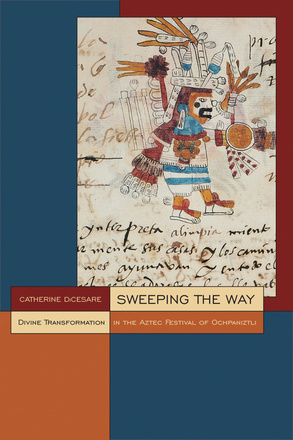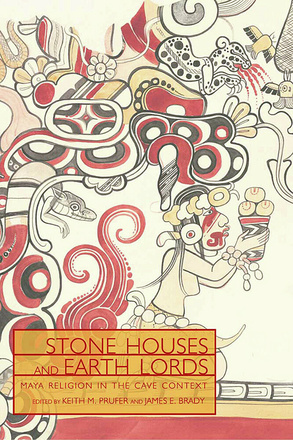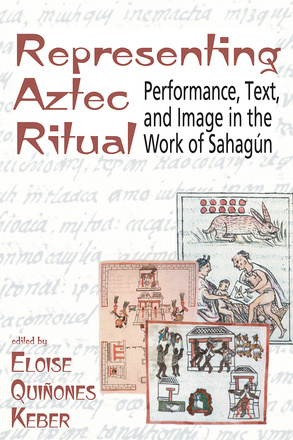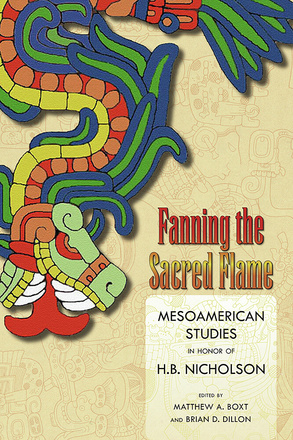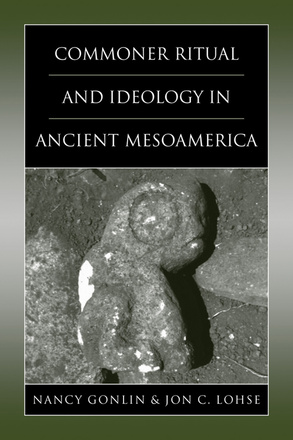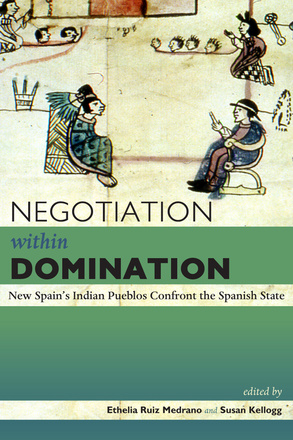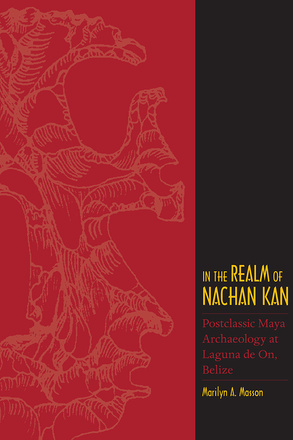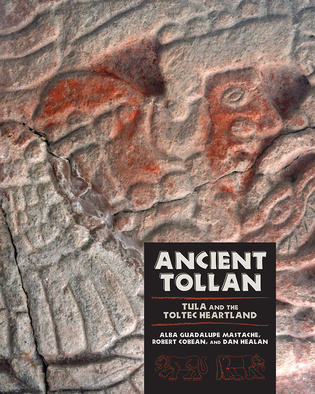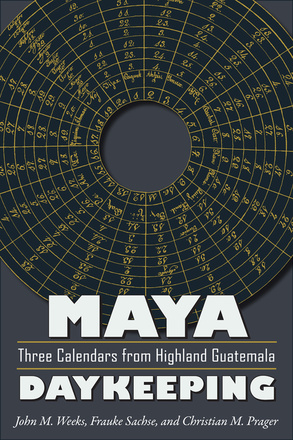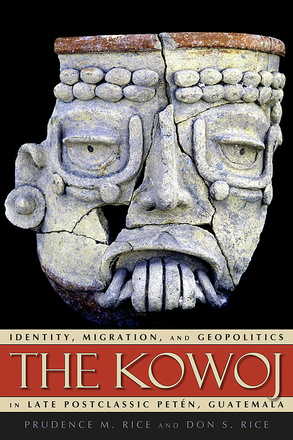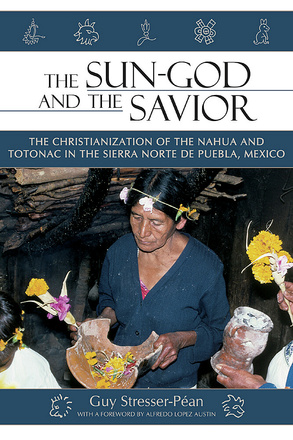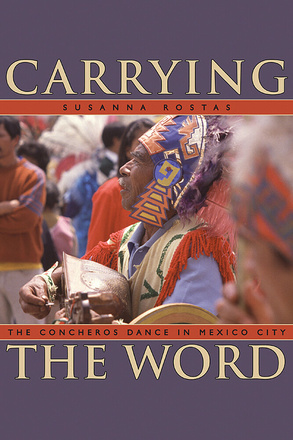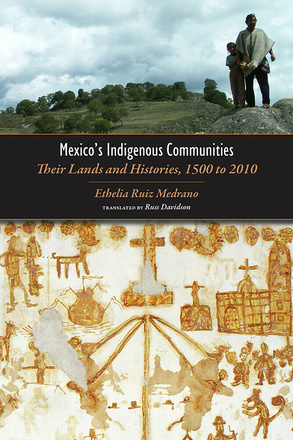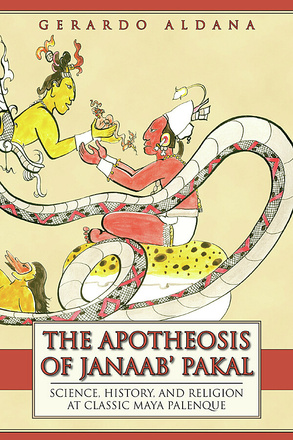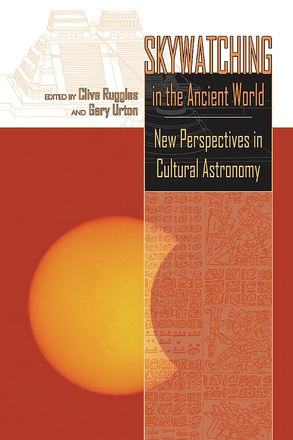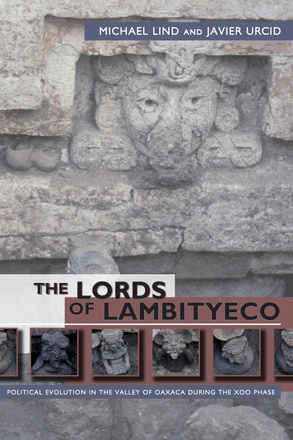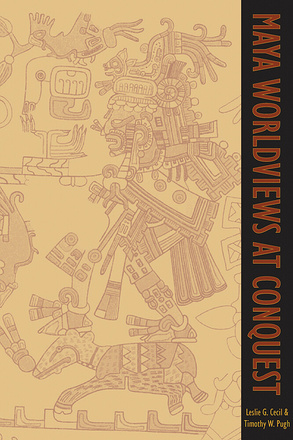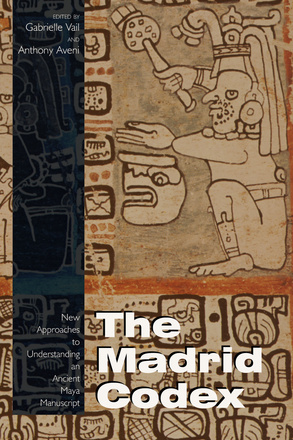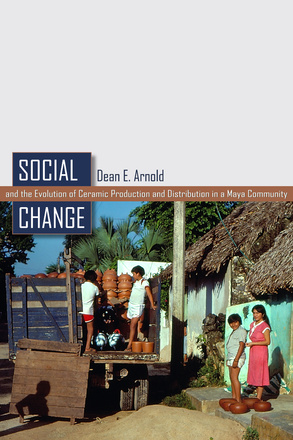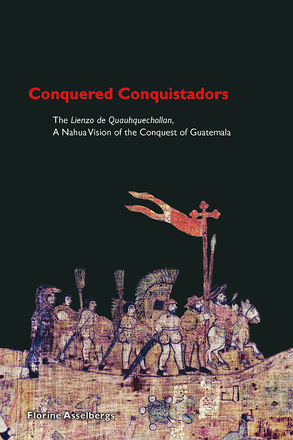Showing 1-20 of 24 items.
Sweeping the Way
Divine Transformation in the Aztec Festival of Ochpaniztli
University Press of Colorado
Incorporating human sacrifice, flaying, and mock warfare, the pre-Columbian Mexican ceremony known as Ochpaniztli, or “Sweeping,” has long attracted attention. Although among the best known of eighteen annual ceremonies, Ochpaniztli’s significance has nevertheless been poorly understood. Ochpaniztli is known mainly from early colonial illustrated manuscripts produced in cross-cultural collaboration between Spanish missionary-chroniclers and native Mexican informants and artists.
Stone Houses and Earth Lords
Maya Religion in the Cave Context
Edited by Keith M. Prufer and James E. Brady
University Press of Colorado
Stone Houses and Earth Lords is the first volume dedicated exclusively to the use of caves in the Maya Lowlands, covering primarily Classic Period archaeology from A.D. 100 through the Spaniards' arrival. Although the caves that riddled the lowlands show no signs of habitation, most contain evidence of human use - evidence that suggests that they functioned as ritual spaces.
Representing Aztec Ritual
Performance, Text, and Image in the Work of Sahagun
Edited by Eloise Quiñones Keber
University Press of Colorado
Arriving in Mexico less than a decade after the Spanish conquest of 1521, the Franciscan missionary Bernardino de Sahagún not only labored to supplant native religion with Christianity, he also gathered voluminous information on virtually every aspect of Aztec (Nahua) life in contact-period Mexico. Sahagún's remarkably detailed descriptions of Aztec ceremonial life offer the most extensive account of a non-Western ritual system recorded before modern times. Representing Aztec Ritual: Performance, Text, and Image in the Work of Sahagún uses Sahagún's corpus as a starting point to focus on ritual performance, a key element in the functioning of the Aztec world.
Fanning the Sacred Flame
Mesoamerican Studies in Honor of H. B. Nicholson
Edited by Matthew A. Boxt and Brian D. Dillon
University Press of Colorado
Fanning the Sacred Flame: Mesoamerican Studies in Honor of H. B. Nicholson contains twenty-two original papers in tribute to H. B. "Nick" Nicholson, a pioneer of Mesoamerican research. His intellectual legacy is recognized by Mesoamerican archaeologists, art historians, ethnohistorians, and ethnographers--students, colleagues, and friends who derived inspiration and encouragement from him throughout their own careers.
Commoner Ritual and Ideology in Ancient Mesoamerica
Edited by Nancy Gonlin and Jon C. Lohse
University Press of Colorado
This volume explores the ritual life of Mesoamerica's common citizens, inside and outside of the domestic sphere, from Formative through Postclassic periods. Building from the premise that ritual and ideological expression inhered at all levels of society in Mesoamerica, the contributors demonstrate that ideology did not emanate solely from exalted individuals and that commoner ritual expression was not limited to household contexts. Taking an empirical approach to this under-studied and under-theorized area, contributors use material evidence to discover how commoner status conditioned the expression of ideas and values.
Negotiation within Domination
New Spain's Indian Pueblos Confront the Spanish State
University Press of Colorado
Negotiation within Domination examines the formation of colonial governance in New Spain through interactions between indigenous peoples and representatives of the Spanish Crown. The book highlights the complexity of native negotiation and mediation with colonial rule across time, culture, and place and how it shaped colonial political and legal structures from the sixteenth to the eighteenth centuries.
In the Realm of Nachan Kan
Postclassic Maya Archaeology at Laguna De On, Belize
University Press of Colorado
i>In the Realm of Nachan Kan</i> opens a window on Postclassic Maya patterns of cultural development and organization through a close examination of the small rural island of Laguna de On, a location that was distant from the governing political centers of the day.
Maya Daykeeping
Three Calendars from Highland Guatemala
University Press of Colorado
In Maya Daykeeping, three divinatory calendars from highland Guatemala - examples of a Mayan literary tradition that includes the Popul Vuh, Annals of the Cakchiquels, and the Titles of the Lords of Totonicapan - dating to 1685, 1722, and 1855, are transcribed in K'iche or Kaqchikel side-by-side with English translations. Calendars such as these continue to be the basis for prognostication, determining everything from the time for planting and harvest to foreshadowing illness and death. Good, bad, and mixed fates can all be found in these examples of the solar calendar and the 260-day divinatory calendar.
The Kowoj
Identity, Migration, and Geopolitics in Late Postclassic Petén, Guatemala
Edited by Prudence M. Rice and Don S. Rice
University Press of Colorado
Neighbors of the better-known Itza in the central Petén lakes region of Guatemala, the Kowoj Maya have been studied for little more than a decade. The Kowoj: Identity, Migration, and Geopolitics in Late Postclassic Petén, Guatemala summarizes the results of recent research into this ethno-political group conducted by Prudence Rice, Don Rice, and their colleagues.
The Sun God and the Savior
The Christianization of the Nahua and Totonac in the Sierra Norte de Puebla, Mexico
By Guy Stresser-Péan; Foreword by Alfredo López Austin
University Press of Colorado
Guy Stresser-Péan's tour-de-force presents two decades of fieldwork in the Sierra Norte de Puebla, Mexico, where native pre-Hispanic pagan beliefs blended with traditional Catholic evangelization from the sixteenth century and the more recent intrusion of modernism.
Carrying the Word
The Concheros Dance in Mexico City
University Press of Colorado
In Carrying the Word: The Concheros Dance in Mexico City, the first full length study of the Concheros dancers, Susanna Rostas explores the experience of this unique group, whose use of dance links rural religious practices with urban post-modern innovation in distinctive ways even within Mexican culture, which is rife with ritual dances.
Mexico's Indigenous Communities
Their Lands and Histories, 1500-2010
By Ethelia Ruiz Medrano; Translated by Russ Davidson
University Press of Colorado
A rich and detailed account of indigenous history in central and southern Mexico from the sixteenth to the twenty-first centuries, Mexico's Indigenous Communities is an expansive work that destroys the notion that Indians were victims of forces beyond their control and today have little connection with their ancient past.
The Apotheosis of Janaab' Pakal
Science, History, and Religion at Classic Maya Palenque
University Press of Colorado
The Apotheosis of Janaab' Pakal takes up anew the riddles within a number of Maya hieroglyphic inscriptions first recognized by Floyd Lounsbury. Gerardo Aldana unpacks these mathematical riddles using an approach grounded in a reading of the texts made possible by recent advances in decipherment. Using a history of science methodology, he expands upon (and sometimes questions) the foundational work of archaeoastronomers.
Skywatching in the Ancient World
New Perspectives in Cultural Astronomy
Edited by Clive Ruggles and Gary Urton
University Press of Colorado
Compiled in honor of Anthony F. Aveni, America's leading archaeoastronomer, Skywatching in the Ancient World offers state-of-the-art work in cultural astronomy by well-known experts in Mayan glyphic studies, cultural history, ethnohistory, and the history of science and of religions.
The Lords of Lambityeco
Political Evolution in the Valley of Oaxaca during the Xoo Phase
By Michael Lind and Javier Urcid
University Press of Colorado
Focusing on change within this single archaeological period rather than between time periods, The Lords of Lambityeco traces the changing political relationships between Lambityeco and Monte Albán that led to the fall of the Zapotec state. Using detailed analysis of elite and common houses, tombs, and associated artifacts, the authors demonstrate increased political control by Monte Albán over Lambityeco prior to the abandonment of both settlements.
Maya Worldviews at Conquest
Edited by Leslie G. Cecil and Timothy W. Pugh
University Press of Colorado
Maya Worldviews at Conquest examines Maya culture and social life just prior to contact and the effect the subsequent Spanish conquest, as well as contact with other Mesoamerican cultures, had on the Maya worldview.
Focusing on the Postclassic and Colonial periods, Maya Worldviews at Conquest provides a regional investigation of archaeological and epigraphic evidence of Maya ideology, landscape, historical consciousness, ritual practices, and religious symbolism before and during the Spanish conquest.
The Madrid Codex
New Approaches to Understanding an Ancient Maya Manuscript
Edited by Gabrielle Vail and Anthony Aveni
University Press of Colorado
This volume offers new calendrical models and methodologies for reading, dating, and interpreting the general significance of the Madrid Codex. The longest of the surviving Maya codices, this manuscript includes texts and images painted by scribes conversant in Maya hieroglyphic writing, a written means of communication practiced by Maya elites from the second to the fifteenth centuries A.D.
Social Change and the Evolution of Ceramic Production and Distribution in a Maya Community
University Press of Colorado
Dean E. Arnold made ten visits to Ticul, Yucatan, Mexico, witnessing the changes in transportation infrastructure, the use of piped water, and the development of tourist resorts. Even in this context of social change and changes in the demand for pottery, most of the potters in 1997 came from the families that had made pottery in 1965. This book traces changes and continuities in that population of potters, in the demand and distribution of pottery, and in the procurement of clay and temper, paste composition, forming, and firing.
Conquered Conquistadors
The Lienzo de Quauhquechollan, A Nahua Vision of the Conquest of Guatemala
University Press of Colorado
In Conquered Conquistadors, Florine Asselbergs reveals that a large pictorial map, the Lienzo de Quauhquechollan, long thought to represent a series of battles in central Mexico, was actually painted in the 1530s by Quauhquecholteca warriors to document their invasion of Guatemala alongside the Spanish and to proclaim themselves as conquistadors. This painting is the oldest known map of Guatemala and a rare document of the experiences of indigenous conquistadors.
Stay Informed
Subscribe nowRecent News

